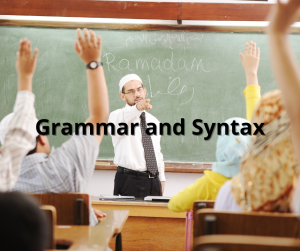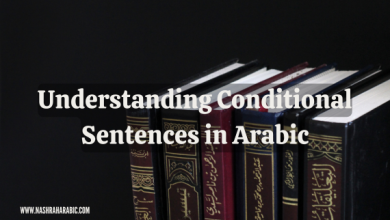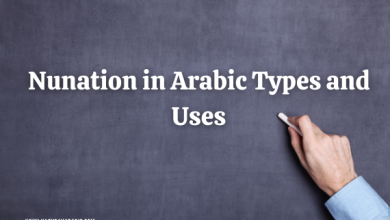Are you curious about Modern Standard Arabic and its unique features? (MSA) is the standardized form of the Arabic language used in formal communication, literature, media, and education across the Arab world. In this comprehensive guide, we’ll delve into the characteristics of Modern Standard Arabic, exploring its grammar, vocabulary, pronunciation, and cultural significance.
Introduction
Modern Standard Arabic, often abbreviated as MSA, serves as the standard and formal variety of the Arabic language. It plays a crucial role in communication, education, and literature throughout the Arab world. Understanding the characteristics of Modern Standard Arabic is essential for anyone interested in Arabic language and culture.
Origin and Development
Modern Standard Arabic traces its origins back to Classical Arabic, the language of the Quran and classical literature. Over time, as Arabic-speaking societies evolved and interacted with various cultures, Modern Standard Arabic emerged as a standardized form of the language. Its development was influenced by linguistic reforms and efforts to modernize Arabic for contemporary use.

Grammar and Syntax
The grammar and syntax of Modern Standard Arabic are characterized by their complexity and adherence to traditional Arabic linguistic structures. MSA follows a tri-consonantal root system, where words are formed from root letters with various vowel patterns. It employs a rich system of verb conjugations, noun declensions, and grammatical rules governing sentence structure and word order.
Vocabulary and Usage
Modern Standard Arabic vocabulary encompasses a wide range of terms and expressions drawn from classical Arabic, as well as borrowed words from other languages. MSA is characterized by its formal and literary usage, making it suitable for written communication, formal speeches, academic texts, and media broadcasts. While MSA is not typically used in everyday conversation, it serves as a unifying language for Arabs from different regions.

Pronunciation and Phonology
Pronunciation in Modern Standard Arabic follows standard phonetic rules, with each letter representing specific sounds. However, there may be variations in pronunciation across different regions and dialects. MSA pronunciation is generally based on the rules of Classical Arabic, with some modern modifications to accommodate changes in speech patterns over time.
Cultural Significance
Modern Standard Arabic holds significant cultural and religious importance as the language of the Quran and classical Arabic literature. It serves as a symbol of Arab identity and heritage, fostering a sense of unity and connection among Arabic-speaking communities worldwide. MSA is also instrumental in preserving and promoting Arabic culture and civilization.
Learning Modern Standard Arabic
Learning Modern Standard Arabic requires dedication, practice, and immersion in the language. While MSA may initially appear daunting due to its complex grammar and formal register, it offers rewarding opportunities for intellectual and cultural enrichment. Various resources, including textbooks, language courses, online tutorials, and language exchange programs, are available to support learners in their journey to master MSA.
Applications of MSA
Modern Standard Arabic has diverse applications across various domains, including academia, diplomacy, media, literature, and religious studies. Proficiency in MSA opens doors to career opportunities, cultural exchange programs, and international communication. It also facilitates access to classical Arabic literature, religious texts, and historical documents.
Challenges in Learning MSA
While learning Modern Standard Arabic can be a fulfilling experience, it also presents challenges for learners, particularly those accustomed to non-Semitic languages. The intricate grammar, complex sentence structures, and formal register of MSA require time and effort to master. Additionally, exposure to spoken Arabic dialects may pose difficulties for learners transitioning from MSA to colloquial varieties.
Conclusion
In conclusion, Modern Standard Arabic is a cornerstone of Arab culture, communication, and identity. Its rich linguistic heritage, formal register, and cultural significance make it a vital component of Arabic language and society. While learning MSA may present challenges, the rewards of mastering this esteemed language are boundless, offering access to a wealth of knowledge, literature, and cultural heritage.
FAQs
Is Standard Arabic spoken in everyday conversation?
While Standard Arabic is not typically used in informal conversation, it serves as the standard written and formal spoken language in academic, media, and official settings.
Can I communicate with Arabs using only Standard Arabic?
While proficiency in Modern Standard Arabic is valuable for formal communication and academic pursuits, most Arabs converse in their local dialects for everyday communication.
How long does it take to learn Standard Arabic?
The time it takes to learn Modern Standard Arabic varies depending on factors such as prior language experience, study intensity, and language learning goals. With consistent practice and dedication, learners can make significant progress over time.
Are there differences between Modern Standard Arabic and Classical Arabic?
While Standard Arabic is based on Classical Arabic, it has evolved over time and incorporates modern vocabulary and linguistic conventions. However, the core grammar and structure of MSA remain rooted in Classical Arabic.
What resources are available for learning Standard Arabic?
Numerous resources are available for learning Standard Arabic, including textbooks, language courses, online tutorials, language exchange programs, and immersive language experiences. It’s essential to explore various resources and find the approach that best suits your learning style and goals.




